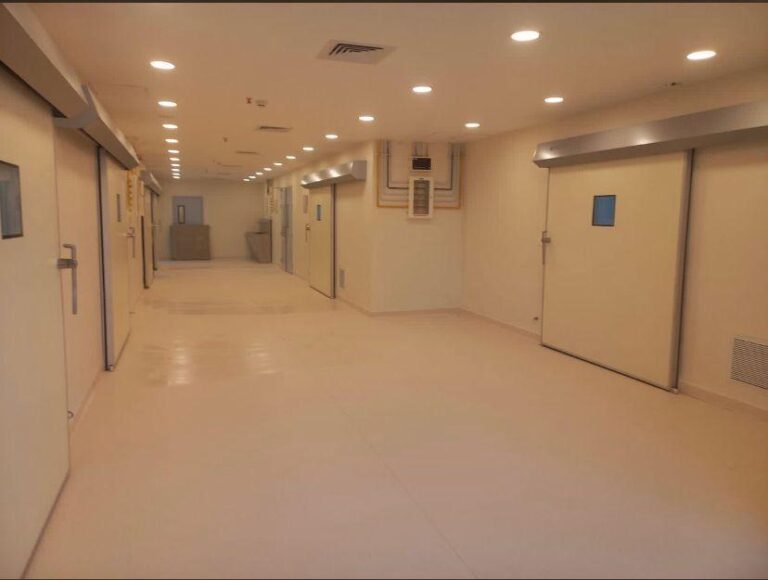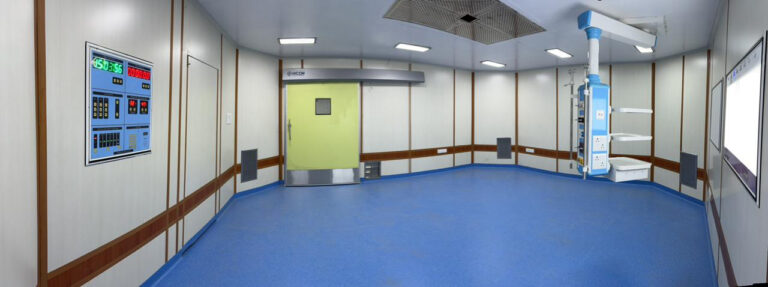In environments where radiation exposure poses a significant risk, anti-radiation doors are crucial safety components. Whether it’s in hospitals, research laboratories, or industrial facilities, these doors are meticulously designed to protect people from harmful radiation, ensuring compliance with safety regulations and promoting overall well-being. In this article, we’ll explore the essential features of anti-radiation doors and the key benefits they provide.
What is an Anti-Radiation Door?
An anti-radiation door is a specialized barrier constructed to prevent the escape of radiation from a designated space. These doors are commonly installed in areas like X-ray rooms, MRI suites, radiology departments, and nuclear facilities. They provide a shield against ionizing radiation, which can be extremely hazardous to human health, potentially causing severe tissue damage and increasing the risk of cancer.
To meet the high safety standards required in such settings, anti-radiation doors are made from materials like lead and stainless steel. These materials have unique properties that effectively block radiation, ensuring the safety of both staff and patients. The construction and placement of these doors are critical, with design specifications varying based on the type and intensity of radiation being contained.
Essential Features of Anti-Radiation Doors
- Lead Lining
The most vital component of an anti-radiation door is its lead lining. Lead is a dense metal with excellent radiation-shielding capabilities, making it the material of choice for constructing these doors. Depending on the radiation exposure level in a specific facility, the thickness of the lead lining can vary. Proper lead thickness ensures effective radiation blockage, making it imperative to follow safety guidelines and standards during installation. - Robust Door Frames and Hardware
Anti-radiation doors must be supported by sturdy door frames and hardware. Heavy-duty frames, typically made from stainless steel, provide structural integrity, ensuring the door maintains its position and effectiveness over time. Special attention is given to hinges and locking mechanisms, as they must be able to support the heavy lead-lined door while ensuring a secure seal. - Sealing Mechanism
The doors are equipped with advanced sealing mechanisms to prevent radiation leakage. These seals, which run along the edges of the door, are designed to keep the space airtight, eliminating any gaps through which radiation could escape. Automatic door sealing systems are also an option, enhancing efficiency in high-traffic areas. - Customizable Design Options
At HIKOM International LLP, anti-radiation doors can be tailored to fit specific requirements. Customizations include door size, finish, and the addition of features like radiation-safe viewing windows. These options provide flexibility to match the architectural needs of the facility while maintaining safety standards.
Key Benefits of Anti-Radiation Doors
- Enhanced Safety for Personnel and Patients
The primary benefit of an anti-radiation door is the protection it offers. Medical staff, technicians, and patients are shielded from harmful radiation exposure, significantly reducing the risk of radiation-induced health issues. This protection is particularly important in medical settings where X-rays and other imaging techniques are performed frequently. - Regulatory Compliance
Installing anti-radiation doors ensures compliance with health and safety regulations set by governing bodies. In healthcare and research settings, adherence to these regulations is not just a legal requirement but also a moral obligation to safeguard everyone within the facility. HIKOM International LLP provides anti-radiation doors that meet or exceed these regulatory standards, giving facility managers peace of mind. - Long-Term Durability
Anti-radiation doors are built to last. The robust construction materials, like lead and stainless steel, make them highly durable, capable of withstanding years of heavy use without degradation in performance. This durability translates into cost savings over time, as facilities won’t need frequent replacements or repairs. - Customization for Functionality and Aesthetics
Modern anti-radiation doors do not compromise on aesthetics. They can be customized to blend seamlessly with the interior design of hospitals or labs. At HIKOM International LLP, we understand that functionality and appearance are equally important. Our anti-radiation doors are available in a variety of finishes and can be integrated with features like automatic operation to enhance both safety and convenience.
Applications of Anti-Radiation Doors
Anti-radiation doors are essential in various settings beyond hospitals. They are used in dental clinics, veterinary practices, and industrial environments where radiation equipment is utilized. Research facilities dealing with radioactive substances also rely on these doors to maintain a safe working environment.
Conclusion
Anti-radiation doors are indispensable for maintaining safety in environments where radiation exposure is a risk. Their lead lining, robust frames, advanced sealing mechanisms, and customization options make them highly effective in preventing radiation escape. At HIKOM International LLP, we take pride in offering top-quality anti-radiation doors that are engineered to meet the highest safety standards while providing flexibility in design.
Investing in anti-radiation doors from HIKOM International LLP ensures the ultimate protection for your staff, patients, and facility, making it a wise and necessary choice for any space exposed to radiation.


